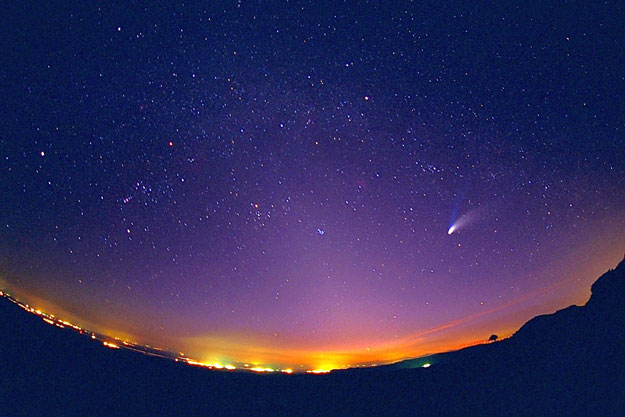
|
Credit: Juan Carlos Casado
Explanation:
Sirius is the brightest star in the night sky.
Sirius is visible on the far left
of the above photograph, to the left of the constellation of Orion and Comet Hale-Bopp.
Intrinsically,
Sirius is over 20 times brighter than our
Sun and over twice as massive.
As Sirius is
8.7 light years distant, it is not the closest star system -
the Alpha Centauri
system holds this distinction.
Sirius is called the Dog Star
because of its prominence in the constellation of Canis Majoris (Big Dog).
In 1862,
Sirius was discovered to be a binary
star system with a companion star,
Sirius
B, 10,000 times dimmer than the
bright primary, Sirius A.
Sirius B was the first white dwarf star
discovered, a type of star first understood by
Subrahmanyan Chandrasekhar in 1930.
While studying Sirius in 1718,
Edmond Halley discovered that stars move
with respect to each other.
There is conflicting evidence that
Sirius appeared more red only 2000 years ago.
|
January February March April May June July August September October November December |
| ||||||||||||||||||||||||||||||||||||||||||||||||
NASA Web Site Statements, Warnings, and Disclaimers
NASA Official: Jay Norris. Specific rights apply.
A service of: LHEA at NASA / GSFC
& Michigan Tech. U.
Based on Astronomy Picture
Of the Day
Publications with keywords: Sirius - star
Publications with words: Sirius - star
See also:
